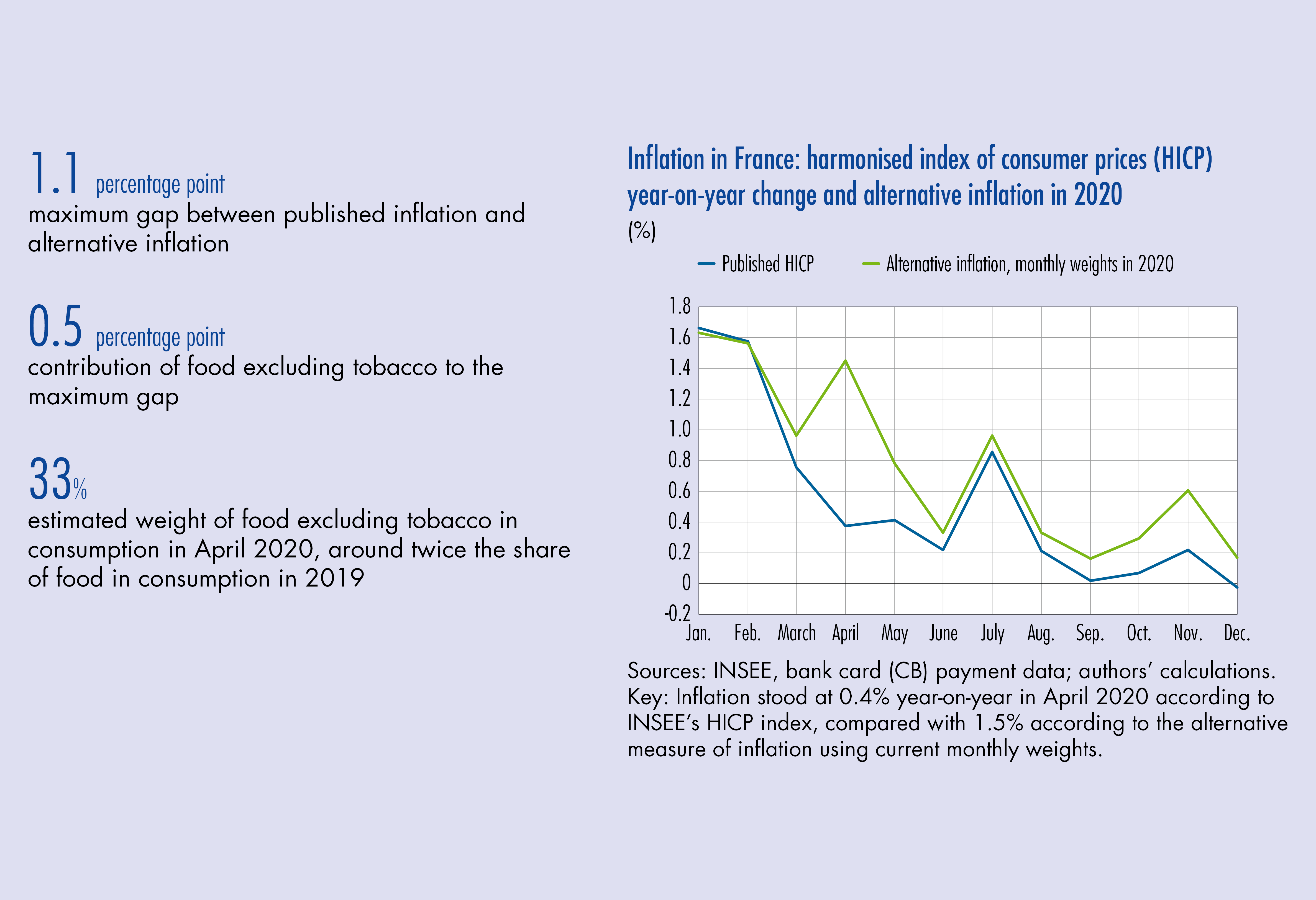
Banque de France Bulletin no. 234: Article 3 Inflation in France during the lockdowns
Measured at a monthly frequency by INSEE, France’s national statistical office, inflation reflects the change in the prices of French households’ average consumption basket. Each product is assigned an importance in the price index equal to its weight in total consumption. This weight is assessed as an annual average. However, the two 2020 lockdowns due to Covid-19 distorted the structure of household consumption temporarily. For a few months in 2020, this caused a gap to open up between the published inflation rate and an alternative inflation index capturing these distortions in real time. As the overall structure of consumption soon got back to normal after the lockdowns, the gap between the two inflation indices was contained over 2020 as a whole. The annual update of the weights used in the 2021 index provided an opportunity to factor in Covid-19’s impact on the structure of consumption.
1 Measure inflation while taking account of changes to the structure of consumption
Covid-19 affected the measurement of inflation
Inflation is measured by statistical offices as the average of price changes over the year for products of a benchmark consumption basket. In European Union (EU) countries, this inflation measure is harmonised through the use of shared methodological rules (Eurostat, 2018). As a result, the same definition is used for the benchmark consumption basket across all EU countries: it covers all household consumption and includes goods, such as food, clothing, energy and furnishings, as well as services, such as rent, recreation and cultural services, restaurants and hotels. The change in the price of each good or service contributes to total inflation in an amount reflecting that good or service’s share of total consumption. For example, food excluding tobacco gets a weight of approximately 18% in the price index for France, reflecting the share of these products in the overall household consumption in France. The structure of consumption used to construct the price index is reviewed at the start of each year to ensure that the index continues to be representative of consumption in France. The shares of each of the products consumed in the price index are updated using the average consumption of each product during the previous year. Use of the average share for the previous year and not the current year is due to the difficulty in obtaining accurate and detailed real-time information on monthly consumption. Using information on the previous year’s consumption is a way to have reliable information on the structure of consumption at the most granular product level. This is not generally a problem when it comes to measuring inflation, as the structure of the consumption basket does not change much from one year to the next, reflecting gradual shifts in household consumption habits.
However, using the previous year’s consumption structure as the benchmark becomes much more problematic when the consumption basket is subject to abrupt and large changes during the course of a single year, as was the case in 2020 with the initial lockdown in March and its subsequent gradual exit, followed by the second lockdown in November (Diewert and Fox, 2020). By construction, the inflation measure cannot capture this structural change, which may make it harder to interpret published inflation figures (Tenreyro, 2020), since the weights used are no longer sufficiently representative of...
Download the PDF version of this document

- Published on 05/21/2021
- 12 pages
- EN
- PDF (532.5 KB)
Bulletin Banque de France 234
Updated on: 05/21/2021 10:01
